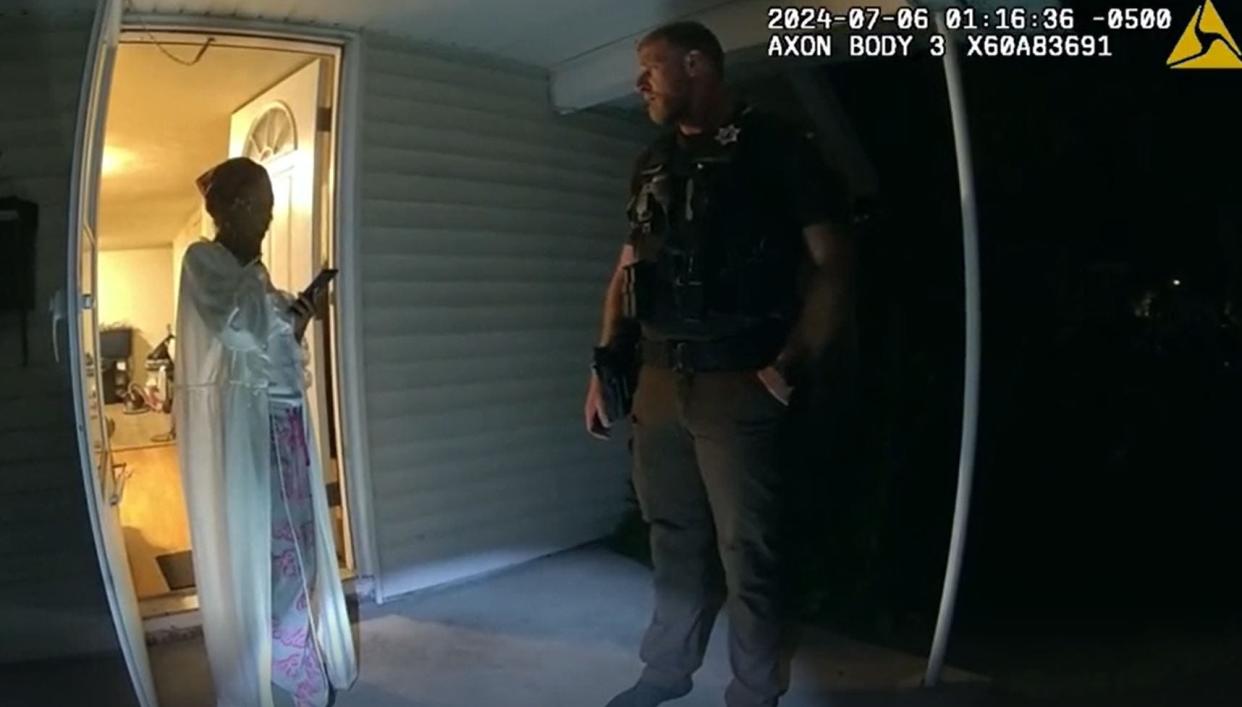Everything to know about Illinois bodycam laws after fatal Sonya Massey shooting

- Oops!Something went wrong.Please try again later.
The fatal shooting of Sonya Massey by a Sangamon County Sheriff's deputy has prompted questions of law enforcement in terms of hiring guidelines, training protocols and body camera use.
Massey, a 36-year-old Black woman, was shot and killed in her own residence on July 6 after making a 911 call from her home in Woodside Township. Now former Sheriff's deputy Sean P. Grayson of Riverton has been fired from the force and charged with five counts, including first-degree murder, in the shooting.
It was an outpour of reaction from state and federal lawmakers, including President Joe Biden and Vice President Kamala Harris, when the footage was released Monday afternoon. For Democratic lawmakers in Springfield, the shooting showed the importance of the police reforms contained in the SAFE-T Act.
More: 'Where is the humanity?' Reacting to release of the Sonya Massey bodycam footage
One of the leading proponents of the SAFE-T Act, state Sen. Robert Peters, D-Chicago, called the video "sickening" and said the law's language surrounding body camera requirements and the end of cash bail were proven first steps at justice. Grayson, 30, was denied pretrial release under the Pretrial Fairness Act portion of the law.
In the case involving Grayson, he did not have his body camera turned on initially, but his partner did. Grayson turned his body camera on immediately after the shooting.
Here's what you need to know about body camera law in Illinois.
When does a law enforcement officer have to turn their body camera on?
Under the Law Enforcement Officer-Worn Body Camera Act, officers assigned to wear body cameras must have their camera on at all times when they are on-duty, wearing articles of clothing signifying they are with law enforcement and are responding to a call for service or in any law-enforcement encounter.
What does a call for service include?
Those calls and activities include such things as traffic and pedestrian stops, arrests, searches, interrogations, traffic and crowd, pursuits and more.
When can an officer have their body cameras off?
An officer is not required to have their camera on when they are filing paperwork alone or are solely in the presence of another law enforcement officer. The cameras can also be turned off when the officer is inside a patrol car, courthouse or correctional facility that have a functioning camera system.
More: Who are Illinois' highest paid state workers? Here's the top 10
Are there any conditions where a bodycam must be turned off?
Yes, a bodycam must be turned off if requested by a victim or witness of a crime. The camera must also turn off when an officer is interacting with a confidential informant or an official with the Illinois Department of Revenue, or is at a department facility, when personal financial information could be exposed.
There are exceptions, however. An officer with "reasonable articulable suspicion" that a victim, witness or confidential informant committed or is in the process of committing a crime can still keep their camera on. The officer must inform that affected party that their camera is still recording despite their request.
When can bodycam footage be used to discipline officers?
For an officer to be disciplined, either a formal or informal complaint must be filed, a use of force must have occurred, or the footage could be used as part of an investigation.
What law enforcement agencies are required to have bodycams?
The SAFE-T Act created a five-year timeline for all law enforcement agencies in the state to have body cameras. The requirement started first with agencies with larger populations, topping 500,000 residents, in 2022 and will apply to all remaining agencies regardless of population on Jan. 1, 2025.
Is the state helping fund bodycam funds?
Yes. Included in the $53.1 billion state operating budget for fiscal year 2025 is a $60 million grant program administered by the Illinois Law Enforcement Training and Standards Board. The funding will go to local governments to place cameras inside law enforcement vehicles and training for officers on how to use bodycams.
Contact Patrick M. Keck: pkeck@gannett.com, twitter.com/@pkeckreporter.
This article originally appeared on State Journal-Register: Sonya Massey shooting prompts questions of body cam use, training

